Yash Butala
REVEAL -- Reasoning and Evaluation of Visual Evidence through Aligned Language
Aug 18, 2025Abstract:The rapid advancement of generative models has intensified the challenge of detecting and interpreting visual forgeries, necessitating robust frameworks for image forgery detection while providing reasoning as well as localization. While existing works approach this problem using supervised training for specific manipulation or anomaly detection in the embedding space, generalization across domains remains a challenge. We frame this problem of forgery detection as a prompt-driven visual reasoning task, leveraging the semantic alignment capabilities of large vision-language models. We propose a framework, `REVEAL` (Reasoning and Evaluation of Visual Evidence through Aligned Language), that incorporates generalized guidelines. We propose two tangential approaches - (1) Holistic Scene-level Evaluation that relies on the physics, semantics, perspective, and realism of the image as a whole and (2) Region-wise anomaly detection that splits the image into multiple regions and analyzes each of them. We conduct experiments over datasets from different domains (Photoshop, DeepFake and AIGC editing). We compare the Vision Language Models against competitive baselines and analyze the reasoning provided by them.
A Generative Approach for Financial Causality Extraction
Apr 12, 2022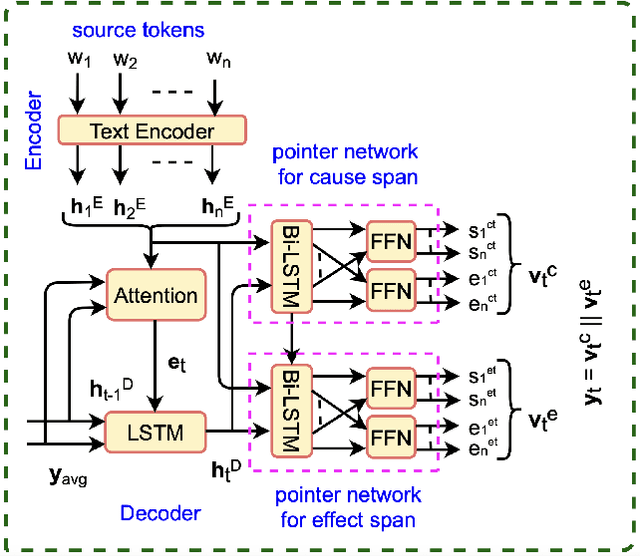
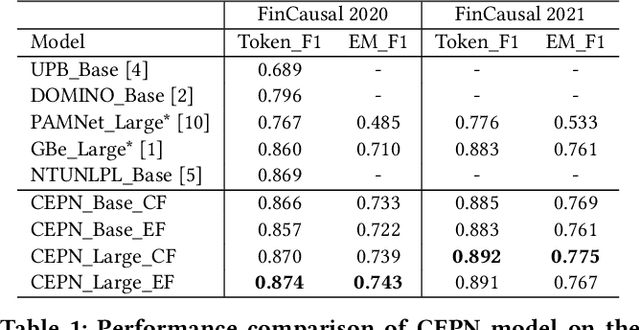
Abstract:Causality represents the foremost relation between events in financial documents such as financial news articles, financial reports. Each financial causality contains a cause span and an effect span. Previous works proposed sequence labeling approaches to solve this task. But sequence labeling models find it difficult to extract multiple causalities and overlapping causalities from the text segments. In this paper, we explore a generative approach for causality extraction using the encoder-decoder framework and pointer networks. We use a causality dataset from the financial domain, \textit{FinCausal}, for our experiments and our proposed framework achieves very competitive performance on this dataset.
PASTE: A Tagging-Free Decoding Framework Using Pointer Networks for Aspect Sentiment Triplet Extraction
Oct 10, 2021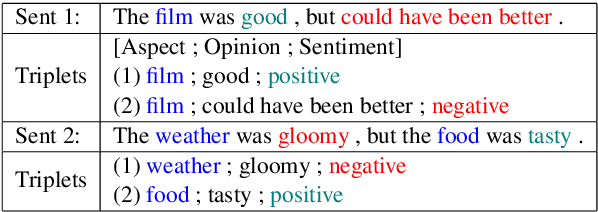


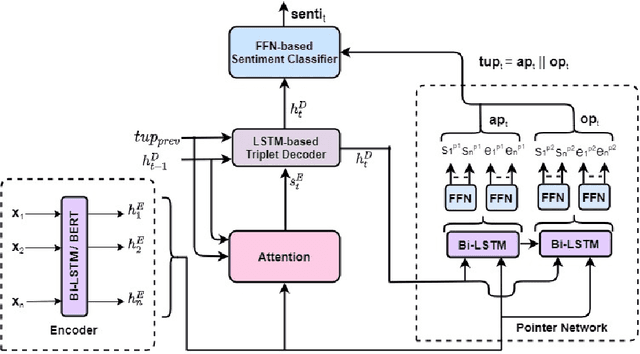
Abstract:Aspect Sentiment Triplet Extraction (ASTE) deals with extracting opinion triplets, consisting of an opinion target or aspect, its associated sentiment, and the corresponding opinion term/span explaining the rationale behind the sentiment. Existing research efforts are majorly tagging-based. Among the methods taking a sequence tagging approach, some fail to capture the strong interdependence between the three opinion factors, whereas others fall short of identifying triplets with overlapping aspect/opinion spans. A recent grid tagging approach on the other hand fails to capture the span-level semantics while predicting the sentiment between an aspect-opinion pair. Different from these, we present a tagging-free solution for the task, while addressing the limitations of the existing works. We adapt an encoder-decoder architecture with a Pointer Network-based decoding framework that generates an entire opinion triplet at each time step thereby making our solution end-to-end. Interactions between the aspects and opinions are effectively captured by the decoder by considering their entire detected spans while predicting their connecting sentiment. Extensive experiments on several benchmark datasets establish the better efficacy of our proposed approach, especially in the recall, and in predicting multiple and aspect/opinion-overlapped triplets from the same review sentence. We report our results both with and without BERT and also demonstrate the utility of domain-specific BERT post-training for the task.
Team Phoenix at WASSA 2021: Emotion Analysis on News Stories with Pre-Trained Language Models
Mar 10, 2021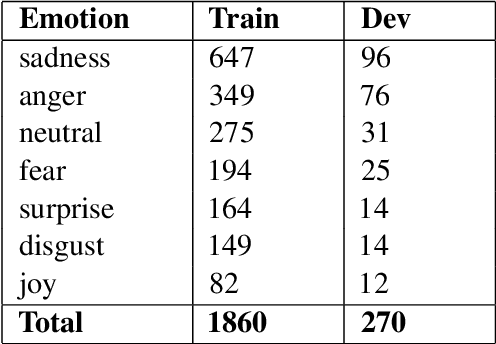
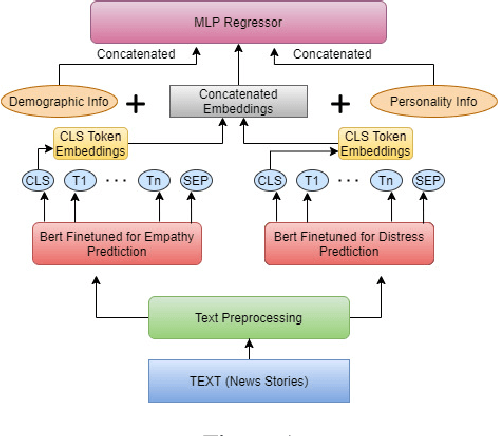
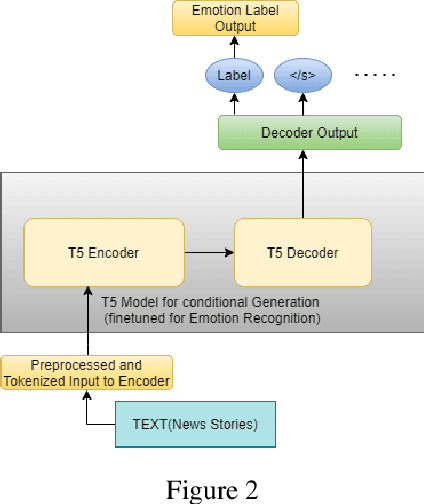
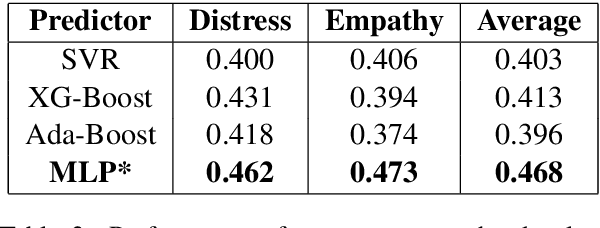
Abstract:Emotion is fundamental to humanity. The ability to perceive, understand and respond to social interactions in a human-like manner is one of the most desired capabilities in artificial agents, particularly in social-media bots. Over the past few years, computational understanding and detection of emotional aspects in language have been vital in advancing human-computer interaction. The WASSA Shared Task 2021 released a dataset of news-stories across two tracks, Track-1 for Empathy and Distress Prediction and Track-2 for Multi-Dimension Emotion prediction at the essay-level. We describe our system entry for the WASSA 2021 Shared Task (for both Track-1 and Track-2), where we leveraged the information from Pre-trained language models for Track-specific Tasks. Our proposed models achieved an Average Pearson Score of 0.417 and a Macro-F1 Score of 0.502 in Track 1 and Track 2, respectively. In the Shared Task leaderboard, we secured 4th rank in Track 1 and 2nd rank in Track 2.
 Add to Chrome
Add to Chrome Add to Firefox
Add to Firefox Add to Edge
Add to Edge